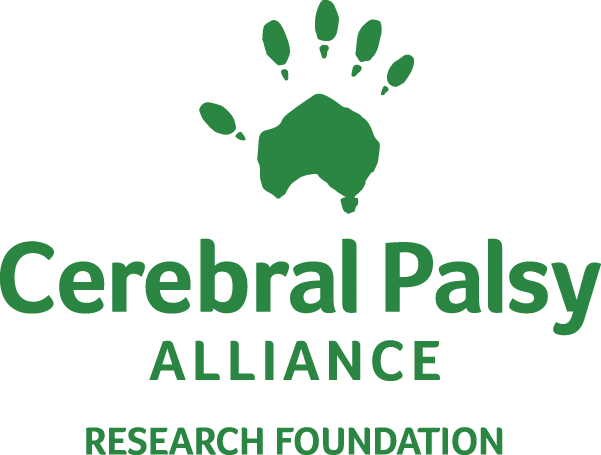People with dyskinetic forms of cerebral palsy have variable movement that is involuntary (outside of their control). These involuntary movements are especially noticeable when a person attempts to move.
Dyskinetic cerebral palsy results from damage to the basal ganglia of the brain. The basal ganglia is like the brain’s switchboard for interpreting messages between the movement centre and the spinal cord – it is responsible for regulating voluntary movements. The different forms of dyskinesia result from damage to slightly different structures within the basal ganglia.
Dyskinetic movements can be:
- Twisting and repetitive movements – known as dystonia
- Slow, ‘stormy’ movements – known as athetosis
- Dance-like irregular, unpredictable movements – known as chorea.
Dyskinetic movements often co-occur alongside spasticity.
What causes dyskinesia?

Dystonia
Dystonia is characterised by involuntary muscle contractions that result in slow twisting or repetitive movements, or abnormal sustained postures, that are triggered by attempts to move.
Characteristics of dystonia include:
- Repetitive and sustained movements
- Awkward postures
- Movements that are rapid or slow and are often painful
- Involuntary movements triggered by attempts at controlled movement
- Involuntary movements occur more frequently when the person is tired, anxious, tense or emotional
- Pain may also result in an increase in these movements
What part of the body is effected?
Dystonia can be present in only one part of the body, known as focal dystonia, or throughout the whole body, known as generalised dystonia.
Focal dystonia may only occur during a particular movement or task. For example, dystonia in the foot muscles may affect how a person stands on that foot.
Cervical dystonia is another example of a focal dystonia – this is dystonia in the neck muscles which causes the neck to twist, tilt or rotate.
Hemidystonia is where on arm and one leg on the same side of the body are affected by dystonia.
Generalised dystonia refers to dystonic movement that affects both legs and at least one arm, or the trunk in combination with at least one arm or leg. Generalised dystonia can affect mobility as well as cause speech and swallowing difficulties.
Sensory tricks
Some people with dystonia notice that specific sensations and movements, known as ‘sensory tricks’, temporarily suppress their unwanted movements.
Examples of sensory tricks include:
- Touching the face or chin with a hand or finger
- Resting the back of the head against a wall
- Tucking the hand under the chin
- Placing the hand behind the back
Some people use these sensory tricks to dampen an unwanted movement in order to prepare their body to make a desired movement.
Athetosis
Athetosis is characterised by slow, continuous, involuntary, writhing movements that are present at rest and made worse by attempts to move.
People with athetosis experience fluctuations in muscle tone – with muscle tone alternating between being floppy (hypotonia) and extreme variable motion (hyperkinesias).
One difficulty caused by this fluctuation is the inability to maintain a posture. This means that sitting and standing still can be difficult and a person may need to work and concentrate harder than usual to get their hand to a certain spot (like scratching their nose).
Characteristic of Athetosis include:
- Noticeable slow and stormy, involuntary muscle movements
- Can cause a person to appear restless and constantly moving
- Unwanted movements may be small or big, rapid, irregularly repetitive, random or jerky
- Slow, writhing movements associated with athetosis usually affect the hands, feet, arms or legs
- The involuntary and uncontrollable movement fluctuations sometimes affect the whole body
- Muscles of the face and tongue can also be affected causing grimacing and drooling
- Athetosis affects a person’s ability to control lip and tongue movements, breathing and vocal cords, as such, speech is affected to some degree in all people with athetosis
- Similarly, a person with athetosis may experience difficulties with eating and drinking
- A person with athetosis is often only able to be still when they are fully relaxed
- Athetoid movements ususally disappear completely when a person is asleep
- Athetoid cerebral palsy makes it difficult to hold onto an object, like a pencil or cutlery, due to fluctuating muscle tone
- The abnormal movement caused by athetosis often increases in response to emotional stress.
Chorea
The term chorea is derived from the Greek word for ‘dance’. Chorea is characterised by involuntary movements that are brief, abrupt, irregular and unpredictable. People with mild chorea may appear fidgety or clumsy whilst people with more severe choreiform movements may display wild, violent movements that are large in amplitude (ballism).
Movements can affect various body parts and interfere with movement, speech and swallowing.
Chorea may worsen with attempts to move and anxiety or stress. Movements subside during sleep.
Choreiform movements may occur with athetosis and when this occurs, they are known as choreoathetosis. They may also occur with dystonia.

